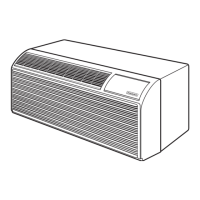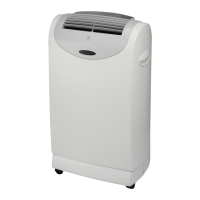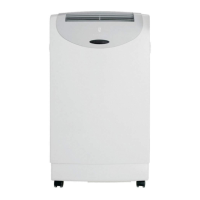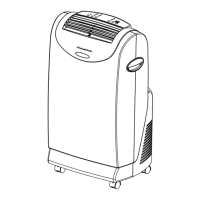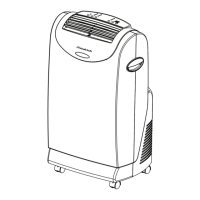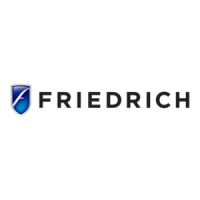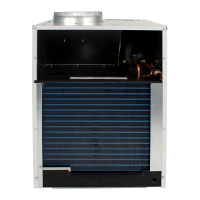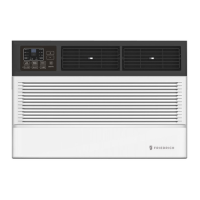14
NOTE: Because The Ptac System Is A Sealed System,
Service Process Tubes Will Have To Be Installed. First
Install A Line Tap And Remove Refrigerant From System.
Make Necessary Sealed System Repairs And Vacuum
System. Crimp Process Tube Line And Solder End Shut.
Do Not Leave A Service Valve In The Sealed System.
Proper refrigerant charge is essential to proper unit operation.
Operating a unit with an improper refrigerant charge will
result in reduced performance (capacity) and/or effi ciency.
Accordingly, the use of proper charging methods during
servicing will insure that the unit is functioning as designed
and that its compressor will not be damaged.
Too much refrigerant (overcharge) in the system is just as bad
(if not worse) than not enough refrigerant (undercharge). They
both can be the source of certain compressor failures if they
remain uncorrected for any period of time. Quite often, other
problems (such as low air fl ow across evaporator, etc.) are
misdiagnosed as refrigerant charge problems. The refrigerant
circuit diagnosis chart will assist you in properly diagnosing
these systems.
An overcharged unit will at times return liquid refrigerant
(slugging) back to the suction side of the compressor
eventually causing a mechanical failure within the compressor.
This mechanical failure can manifest itself as valve failure,
bearing failure, and/or other mechanical failure. The specifi c
type of failure will be infl uenced by the amount of liquid being
returned, and the length of time the slugging continues.
Not enough refrigerant (undercharge) on the other hand,
will cause the temperature of the suction gas to increase
to the point where it does not provide suffi cient cooling for
the compressor motor. When this occurs, the motor winding
230 x 11.0 = 2530
2530/1000 = 2.53 Kilowatts
2.53 x 3413 = 8635
Supply Air 95°F
Return Air 75°F
Temperature Rise 20°
= 400 CFM
8635
21.6
= CFM
20 x 1.08 = 21.6
temperature will increase causing the motor to overheat
and possibly cycle open the compressor overload protector.
Continued overheating of the motor windings and/or cycling
of the overload will eventually lead to compressor motor or
overload failure.
Method Of Charging
The acceptable method for charging the PTAC system is the
Weighed in Charge Method. The weighed in charge method
is applicable to all units. It is the preferred method to use, as
it is the most accurate.
The weighed in method should always be used whenever
a charge is removed from a unit such as for a leak repair,
compressor replacement, or when there is no refrigerant
charge left in the unit. To charge by this method, requires the
following steps:
1. Install a piercing valve to remove refrigerant from the
sealed system. (Piercing valve must be removed from
the system before recharging.)
2. Recover Refrigerant in accordance with EPA regula-
tions.
3. Install a process tube to sealed system.
4. Make necessary repairs to system.
5. Evacuate system to 300 microns or less.
6. Weigh in refrigerant with the property quantity of R-22
refrigerant.
7. Start unit, and verify performance.
8. Crimp the process tube and solder the end shut.
The approximate CFM actually being delivered can be
calculated by using the following formula:
KILOWATTS x 3413
Temp. Rise x 1.08
DO NOT simply use the Kilowatt Rating of the heater (i.e.
2.5, 3.4, 5.0) as this will result in a less-than-correct air fl ow
calculation. Kilowatts may be calculated by multiplying the
mea sured voltage to the unit (heater) times the measured
current draw of all heaters (ONLY) in operation to obtain watts.
Kilowatts are then obtained by dividing by 1000.
EXAMPLE: Measured voltage to unit (heaters) is 230 volts.
Measured Current Draw of strip heaters is 11.0 amps.
REFRIGERANT CHARGING
CALCULATING THE APPROXIMATE CFM

